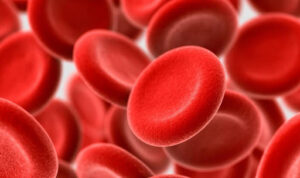Intraoperative blood management, a critical component of patient blood management (PBM), focuses on minimizing blood loss and reducing the need for allogeneic blood transfusions by optimizing the use of the patient’s own blood for autologous transfusion. A key technique in this approach is the red blood cell washing of shed blood prior to using centrifugal or microfiltration cell salvage methods. This process involves recovering blood lost during surgical procedures, then washing and processing it to remove impurities such as free hemoglobin, inflammatory mediators, and other contaminants. The cleansed blood is then reinfused into the patient, significantly reducing the likelihood of transfusion-related complications and enhancing postoperative recovery.

Why blood washing is important for autologous blood transfusion
The blood washing procedure plays a pivotal role in autologous blood transfusion strategies, especially in surgeries anticipated to result in significant blood loss, such as cardiothoracic and orthopedic procedures. Washing shed blood helps remove potentially harmful substances that can contribute to inflammatory responses or coagulation disorders post-transfusion. Moreover, it preserves the functional integrity of RBCs and platelets, reducing the risk of hemolysis and enhancing the oxygen-carrying capacity of the reinfused blood. By maintaining the quality of RBCs and reducing the reliance on donor blood units, blood washing supports both patient safety and the efficient use of healthcare resources.
Microfiltration breakthrough in blood processing
The introduction of microfiltration technologies in shed blood processing, such as the HemoClear system, represents a significant advancement in the field. Unlike traditional centrifugation methods, microfiltration uses a gravity-driven process that subjects the blood cells to less mechanical stress, thereby preserving their integrity and functionality. The microfiltration technique uniquely includes a thorough washing procedure, which sets it apart from other filtration methods. The integrated washing and processing procedure involves channeling shed blood through a microfilter that separates cellular components from plasma and impurities. This separation is achieved without the use of centrifugal force, relying instead on the natural gravity flow and the microscopic pores of the filter, which selectively retain blood cells while allowing other substances to pass through. By enhancing the quality of blood available for postoperative blood transfusion, this method supports better patient outcomes and reduces the risk of transfusion-related complications.
Introducing HemoClear
HemoClear is a novel microfiltration device designed for the washing and separation of blood components. It stands out due to its simplicity, cost-effectiveness, and the absence of electrical components, making it particularly useful when centrifugal methods are unavailable or unpractical. HemoClear operates on the principle of cross-flow microfiltration, where shed blood is passed through a specialized filter that captures and retains cellular elements while washing away plasma and impurities. The system is efficient in reducing the protein load in the blood, thereby minimizing the risk of adverse reactions post-transfusion. Its ease of use and low operational costs make it a viable option for hospitals worldwide, enhancing the scope of patient blood management (PBM) practices.